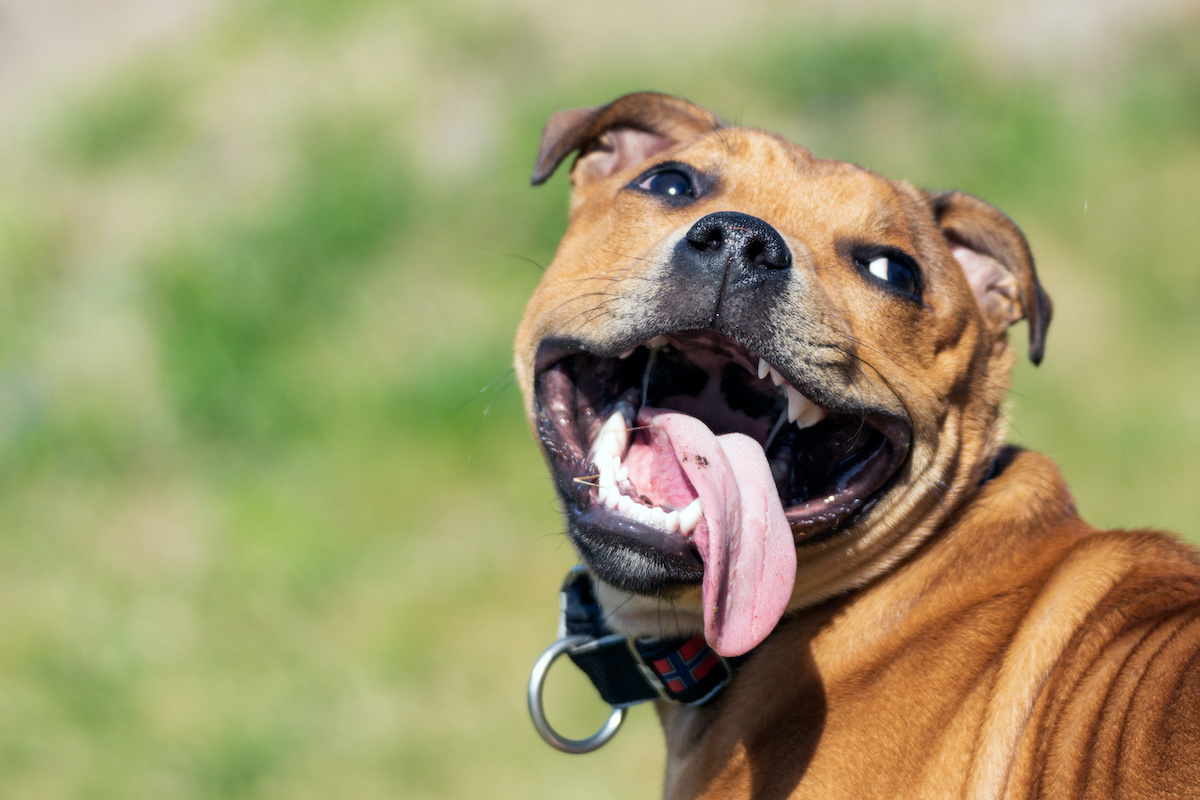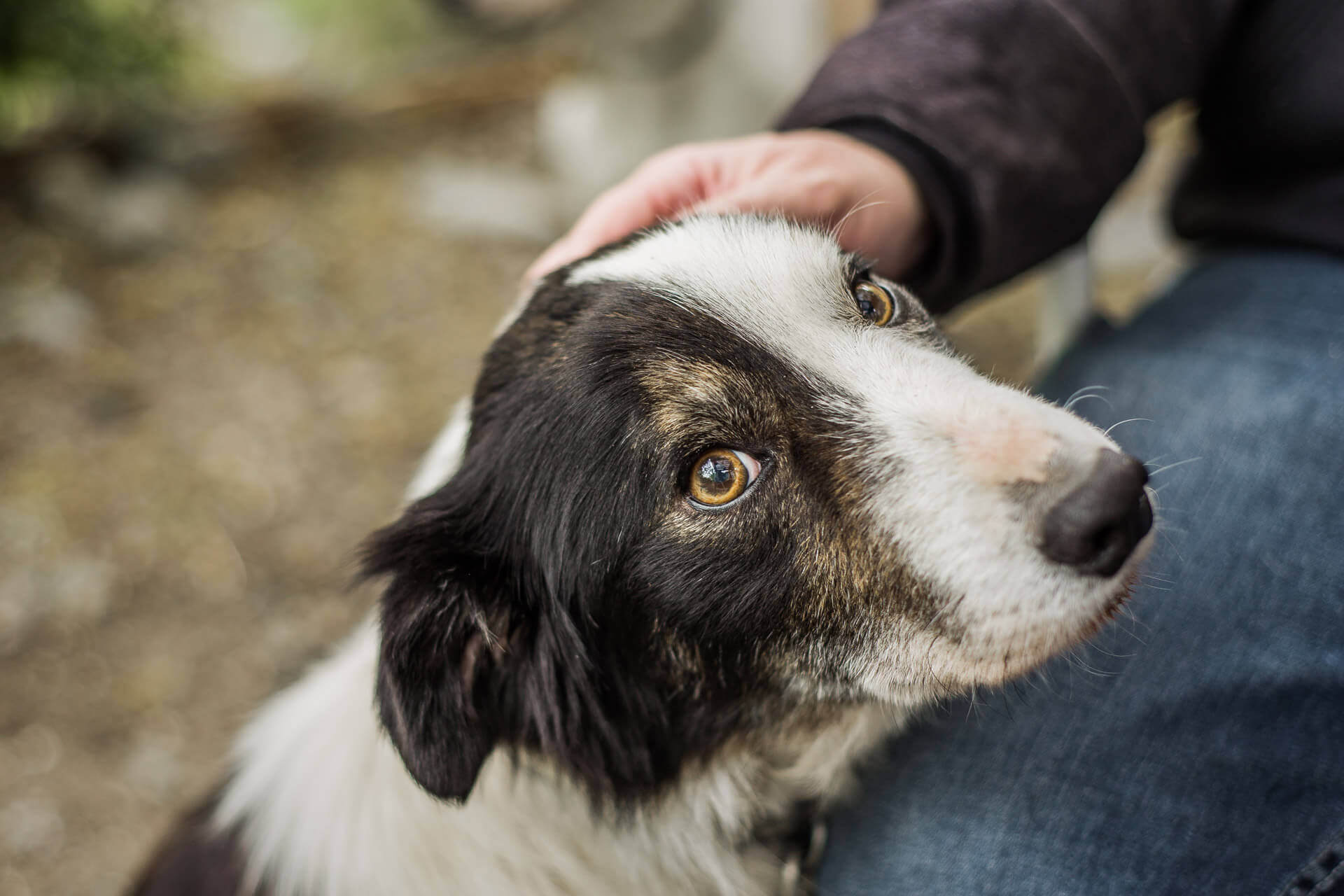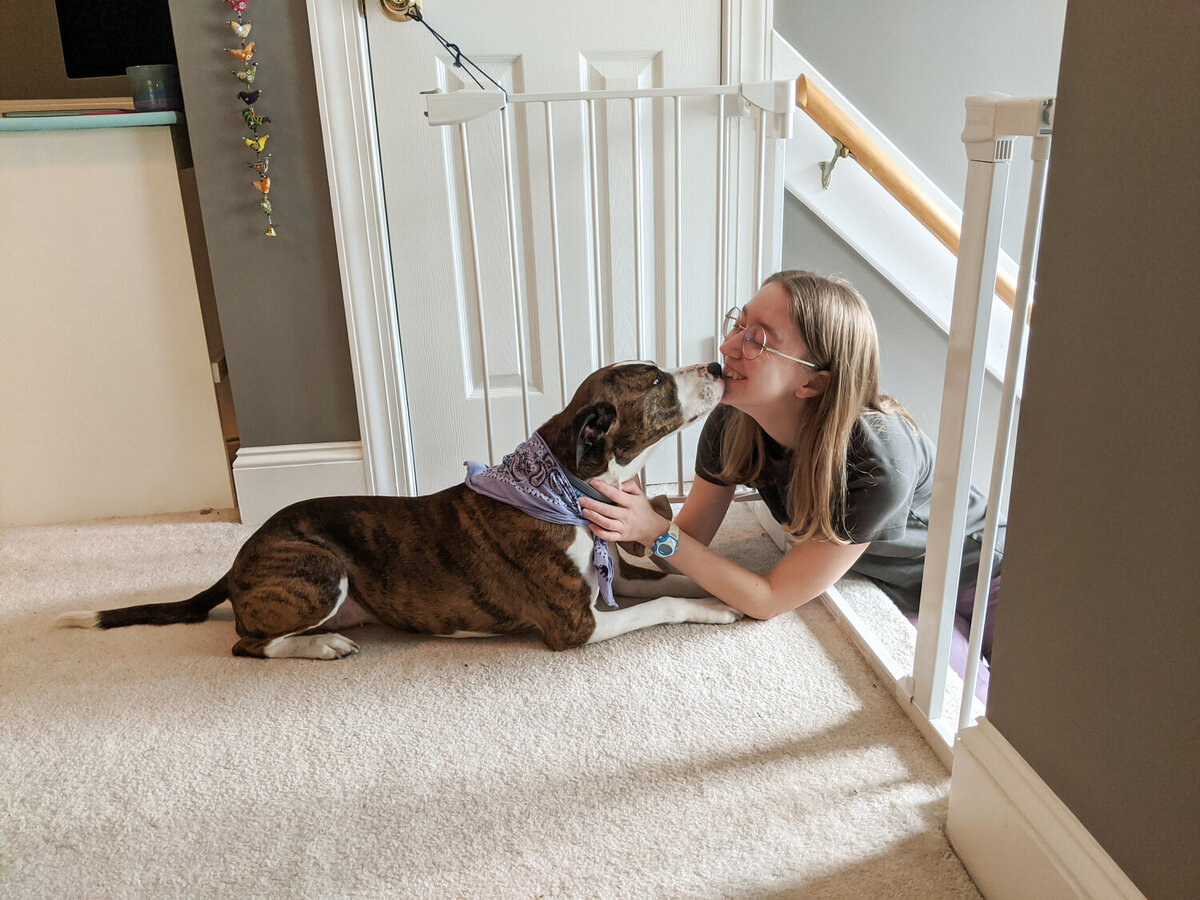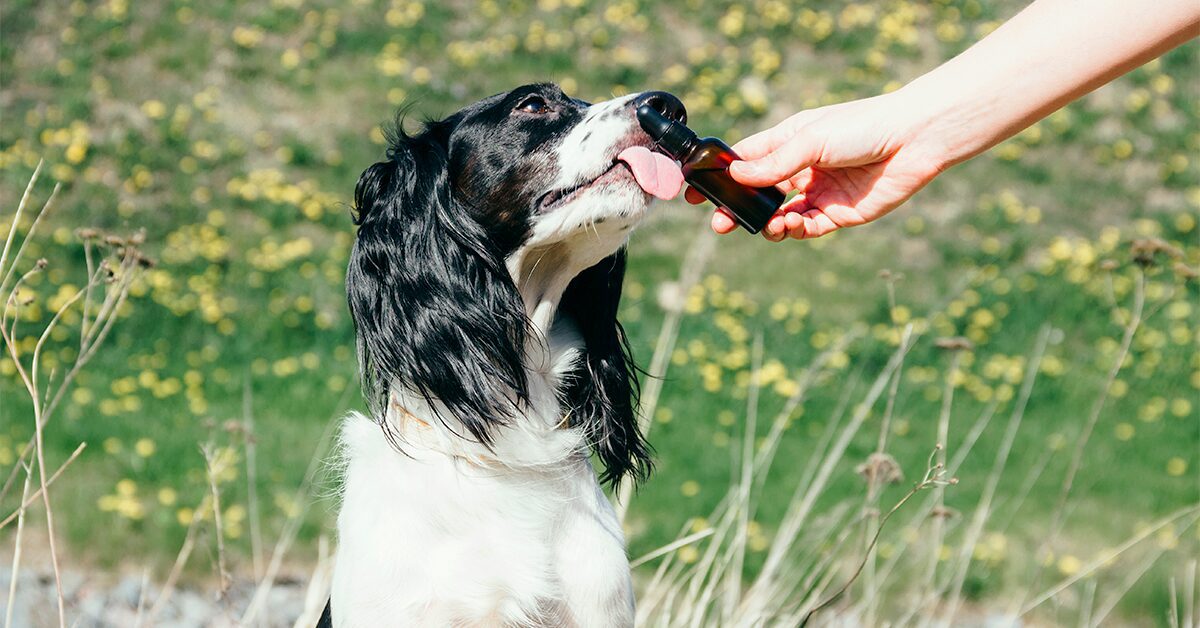Home>Health & Wellness>Behavior & Cognitive Care>How To Ease Anxiety In Dogs


Behavior & Cognitive Care
How To Ease Anxiety In Dogs
Published: January 30, 2024
Discover effective ways to ease anxiety in dogs with behavior and cognitive care techniques. Help your furry friend feel calm and relaxed.
(Many of the links in this article redirect to a specific reviewed product. Your purchase of these products through affiliate links helps to generate commission for Pawsomeoldies.com, at no extra cost. Learn more)
Table of Contents
Understanding Anxiety in Dogs
Anxiety in dogs is a complex and often misunderstood condition that can significantly impact their well-being. Just like humans, dogs can experience various forms of anxiety, including separation anxiety, noise phobia, and social anxiety. Understanding the root causes and manifestations of anxiety in dogs is crucial for providing effective support and care.
Dogs may develop anxiety due to a range of factors, such as past traumatic experiences, lack of socialization, or genetic predisposition. Additionally, changes in their environment, routine, or family dynamics can trigger anxiety. It's important to recognize that anxiety in dogs is not a sign of weakness or disobedience but rather a genuine emotional response to perceived threats or stressors.
When dogs experience anxiety, they may exhibit a wide array of behaviors that signal their distress. These behaviors can include excessive barking, whining, trembling, pacing, destructive chewing, and attempts to escape. Some dogs may also display signs of aggression or withdrawal when they are feeling anxious. By understanding these behavioral cues, pet owners can better identify and address their dog's anxiety.
Furthermore, it's essential to acknowledge that each dog is unique, and their anxiety may manifest differently. While some dogs may become visibly agitated in certain situations, others may internalize their anxiety, leading to subtle changes in their demeanor and overall well-being. Recognizing these individual differences is crucial for tailoring effective anxiety management strategies for each dog.
By gaining a deeper understanding of anxiety in dogs, pet owners can cultivate empathy and patience when supporting their furry companions through challenging times. This knowledge forms the foundation for implementing targeted interventions and creating a nurturing environment that promotes emotional well-being for dogs experiencing anxiety.
Signs and Symptoms of Anxiety in Dogs
Anxiety in dogs can manifest in various ways, and recognizing the signs and symptoms is crucial for providing timely support and intervention. While some dogs may overtly display their distress, others may exhibit more subtle cues that indicate underlying anxiety. By being attuned to these signs, pet owners can take proactive steps to address their dog's emotional well-being.
Behavioral Indicators
Dogs experiencing anxiety may demonstrate a range of behavioral changes that signal their distress. These can include excessive barking, whining, or howling, especially in response to specific triggers such as loud noises, unfamiliar visitors, or separation from their owners. Additionally, anxious dogs may exhibit destructive behaviors, such as chewing furniture, digging, or attempting to escape from confined spaces. These actions often stem from their attempts to cope with overwhelming feelings of fear or unease.
Physical Symptoms
Anxiety can also manifest in dogs through various physical symptoms. Some dogs may tremble or shake, particularly during stressful situations or when exposed to triggering stimuli. Additionally, anxious dogs may display changes in their posture and body language, such as cowering, tucking their tail between their legs, or exhibiting tense and rigid movements. These physical manifestations offer valuable insights into the emotional state of the dog and can serve as important indicators of underlying anxiety.
Changes in Routine
When dogs experience anxiety, their daily routines and habits may be significantly impacted. They may show reluctance or refusal to engage in activities they once enjoyed, such as walks, playtime, or social interactions with other pets. Furthermore, anxious dogs may exhibit changes in their eating habits, such as decreased appetite or excessive panting, which can be indicative of heightened stress levels.
Read more: How To Help Dogs With Anxiety At Night
Social and Emotional Cues
Anxiety in dogs can also influence their social interactions and emotional well-being. Some dogs may become overly clingy or seek constant reassurance from their owners, while others may withdraw and avoid interactions altogether. Additionally, anxious dogs may display signs of restlessness, pacing, or an inability to settle, indicating their inner turmoil and emotional distress.
Overall Demeanor
Observing a dog's overall demeanor and temperament is crucial for identifying signs of anxiety. Dogs experiencing anxiety may appear tense, agitated, or hyper-vigilant, constantly scanning their environment for potential threats. Conversely, some dogs may exhibit a subdued and withdrawn demeanor, signaling their emotional discomfort and inner turmoil.
By recognizing these signs and symptoms of anxiety in dogs, pet owners can gain valuable insights into their dog's emotional well-being and provide the necessary support and care to help alleviate their distress. Understanding these cues enables pet owners to take proactive measures to create a nurturing and supportive environment that promotes their dog's mental and emotional wellness.
Creating a Calm Environment for Your Dog
Creating a calm and soothing environment is essential for helping dogs cope with anxiety and promoting their emotional well-being. By implementing targeted strategies to minimize stressors and provide a sense of security, pet owners can significantly alleviate their dog's anxiety and foster a tranquil living space.
Establishing Safe Spaces
Designating a safe and comfortable space within the home can offer dogs a retreat where they feel secure and protected. This can be a cozy corner with their bed, blankets, and favorite toys, providing a sanctuary where they can seek solace during times of heightened anxiety. Ensuring that this space is free from loud noises and excessive foot traffic can further enhance its calming effect.
Read more: How To Help Aggressive Anxiety In Dogs
Consistent Routine and Predictability
Maintaining a consistent daily routine can instill a sense of predictability for dogs, reducing uncertainty and anxiety triggers. Regular feeding times, exercise schedules, and designated rest periods create a structured environment that promotes a sense of stability and security. Dogs thrive on routine, and a predictable daily rhythm can significantly contribute to their overall emotional well-being.
Minimizing Noise and Distractions
Excessive noise and commotion can exacerbate anxiety in dogs, making it crucial to minimize disruptive stimuli within the environment. Using sound-absorbing materials, such as rugs or curtains, can help dampen external noises and create a more serene atmosphere. Additionally, providing a quiet and secluded area where dogs can retreat during noisy or chaotic events can offer them a reprieve from overwhelming sensory inputs.
Calming Aromatherapy and Music
Incorporating calming aromatherapy, such as lavender or chamomile scents, can have a soothing effect on dogs, promoting relaxation and reducing anxiety levels. Similarly, playing soft, classical music or specially designed calming playlists can create a tranquil ambiance that helps alleviate stress and promotes a sense of calmness for dogs. These sensory interventions can significantly contribute to creating a serene environment that supports their emotional well-being.
Positive Reinforcement and Comforting Interactions
Utilizing positive reinforcement techniques and providing comforting interactions can help dogs associate their environment with feelings of safety and reassurance. Offering treats, gentle petting, and soothing verbal cues in calming situations can reinforce positive associations and alleviate anxiety. Creating a nurturing and supportive atmosphere through these interactions can profoundly impact a dog's emotional state and contribute to a calm and secure environment.
By implementing these strategies and creating a calm environment, pet owners can play a pivotal role in supporting their dog's emotional well-being and alleviating anxiety. A tranquil living space that prioritizes safety, predictability, and sensory comfort can significantly contribute to fostering a sense of calm and security for dogs, ultimately enhancing their overall quality of life.
Read more: How To Use Anxiety Wrap For Dogs
Exercise and Mental Stimulation for Anxiety Relief
Physical exercise and mental stimulation play pivotal roles in alleviating anxiety in dogs, offering holistic benefits that promote emotional well-being and overall health. Engaging in regular physical activities not only helps dogs release pent-up energy but also triggers the release of endorphins, the body's natural mood elevators. Similarly, mental stimulation through interactive games and enrichment activities can provide cognitive engagement, reducing stress and anxiety while fostering a sense of fulfillment for dogs.
Physical Exercise for Anxiety Alleviation
Regular exercise is a cornerstone of anxiety relief for dogs, as it offers a constructive outlet for their energy and helps reduce feelings of restlessness and tension. Activities such as brisk walks, jogging, or interactive play sessions not only provide physical exertion but also enable dogs to explore their surroundings, promoting mental stimulation and sensory enrichment. Additionally, engaging in outdoor activities allows dogs to engage their senses, such as smelling new scents, feeling different textures under their paws, and observing the environment, which can be inherently calming and enriching.
Mental Stimulation and Enrichment Activities
Incorporating mental stimulation activities into a dog's daily routine can significantly contribute to anxiety relief. Interactive toys, puzzle feeders, and scent games engage a dog's cognitive abilities, redirecting their focus from anxiety triggers to stimulating and rewarding tasks. These activities not only provide mental enrichment but also offer a sense of accomplishment and satisfaction, bolstering a dog's confidence and emotional resilience. Furthermore, training sessions that incorporate positive reinforcement techniques can enhance a dog's mental acuity while strengthening the bond between the dog and their owner, fostering a supportive and nurturing relationship.
The Role of Routine and Predictability
Establishing a consistent exercise and mental stimulation routine is paramount for anxiety relief in dogs. Predictable daily activities create a sense of structure and stability, reducing uncertainty and anxiety triggers. Dogs thrive on routine, and knowing what to expect can alleviate feelings of apprehension and promote a sense of security. By integrating regular exercise and mental stimulation into their daily lives, dogs can experience a predictable rhythm that contributes to their emotional well-being and overall anxiety relief.
Tailoring Activities to Individual Needs
Understanding a dog's preferences and energy levels is essential when designing exercise and mental stimulation activities. While some dogs may thrive on vigorous physical activities and complex mental challenges, others may prefer gentler exercises and simpler enrichment tasks. Tailoring activities to suit a dog's individual needs ensures that they derive maximum enjoyment and benefit from the experience, minimizing stress and anxiety while promoting a positive and enriching environment.
By prioritizing regular exercise and mental stimulation, pet owners can significantly contribute to anxiety relief in their dogs, fostering emotional well-being, and promoting a balanced and fulfilling lifestyle. These holistic approaches not only alleviate anxiety but also strengthen the bond between dogs and their owners, creating a supportive and nurturing environment that prioritizes their overall happiness and well-being.
Training and Behavior Modification Techniques
Training and behavior modification techniques play a pivotal role in addressing anxiety in dogs, offering effective strategies to reshape their responses to stressors and promote emotional well-being. By employing positive reinforcement, desensitization, and counterconditioning, pet owners can help their dogs develop coping mechanisms and adaptive behaviors, ultimately reducing anxiety and enhancing their overall quality of life.
Positive Reinforcement Training
Positive reinforcement training focuses on rewarding desired behaviors, encouraging dogs to associate positive experiences with specific actions or stimuli. By using treats, praise, and rewards to reinforce calm and relaxed behaviors, pet owners can effectively promote a sense of security and confidence in their dogs. This approach not only strengthens the bond between dogs and their owners but also empowers dogs to exhibit desirable behaviors in anxiety-inducing situations, gradually reducing their distress and reactivity.
Desensitization and Counterconditioning
Desensitization involves gradually exposing dogs to anxiety triggers in a controlled and systematic manner, allowing them to acclimate to these stimuli without experiencing overwhelming fear or anxiety. Coupled with counterconditioning, which involves pairing the anxiety trigger with a positive experience, such as treats or play, this approach helps dogs reframe their emotional responses and associations. Over time, dogs learn to perceive once-threatening stimuli as non-threatening or even enjoyable, significantly reducing their anxiety levels and reactivity.
Read more: How To Prevent Social Anxiety In My Dog
Behavior Modification Plans
Developing personalized behavior modification plans tailored to the specific triggers and responses exhibited by individual dogs is essential for effectively addressing anxiety. These plans often involve identifying triggers, establishing achievable goals, and implementing gradual exposure and positive reinforcement strategies. By working closely with professional trainers or behaviorists, pet owners can create comprehensive behavior modification plans that target the root causes of their dog's anxiety and facilitate lasting behavioral changes.
Ongoing Training and Support
Consistency and ongoing support are key components of successful behavior modification for anxious dogs. Regular training sessions, reinforcement of positive behaviors, and continuous exposure to anxiety triggers in a controlled manner are essential for reinforcing new coping mechanisms and reducing anxiety responses. Additionally, providing a supportive and nurturing environment that prioritizes patience, empathy, and understanding is crucial for fostering a positive and resilient mindset in anxious dogs.
By incorporating these training and behavior modification techniques into their approach, pet owners can actively contribute to alleviating anxiety in their dogs and promoting their emotional well-being. These strategies not only empower dogs to develop adaptive responses to anxiety triggers but also strengthen the bond between dogs and their owners, creating a supportive and nurturing environment that prioritizes their overall happiness and well-being.
Natural Remedies and Supplements for Anxiety
In addition to behavioral interventions and environmental modifications, natural remedies and supplements can play a valuable role in alleviating anxiety in dogs. These holistic approaches offer gentle yet effective methods to support a dog's emotional well-being and promote a sense of calmness and relaxation.
Herbal Remedies
Herbal remedies, such as chamomile, valerian root, and passionflower, have been recognized for their calming properties in dogs. These natural botanicals contain compounds that can help reduce anxiety and promote relaxation without causing sedation or drowsiness. When administered in appropriate doses, herbal remedies can offer a gentle yet effective way to soothe an anxious dog's nerves and support their emotional equilibrium.
Read more: How To Help Your Dog With Storm Anxiety
CBD Oil
CBD oil, derived from the hemp plant, has gained attention for its potential to alleviate anxiety and stress in dogs. This natural supplement interacts with the endocannabinoid system, which plays a crucial role in regulating mood and emotional responses. By promoting a sense of calm and balance, CBD oil can help reduce anxiety levels in dogs, making it a popular choice for pet owners seeking natural remedies for their anxious companions.
L-Theanine
L-Theanine, an amino acid found in green tea, has been studied for its calming effects on dogs. This natural supplement can help reduce anxiety and promote relaxation without causing drowsiness, making it particularly beneficial for dogs experiencing situational anxiety, such as during thunderstorms or fireworks. L-Theanine works by modulating neurotransmitter levels in the brain, promoting a sense of tranquility and emotional stability.
Probiotics
The gut-brain connection plays a significant role in a dog's emotional well-being, and maintaining a healthy gut microbiome can positively impact their anxiety levels. Probiotic supplements containing beneficial bacteria can support digestive health and contribute to a balanced mood and reduced anxiety. By promoting a healthy gut environment, probiotics can indirectly influence a dog's emotional resilience and stress response.
Adaptogenic Herbs
Adaptogenic herbs, including ashwagandha and rhodiola, have been recognized for their stress-relieving properties in dogs. These natural remedies help the body adapt to stress and maintain equilibrium, supporting a dog's ability to cope with anxiety triggers. By modulating the body's stress response systems, adaptogenic herbs can promote a sense of calmness and emotional stability in anxious dogs.
When considering natural remedies and supplements for anxiety in dogs, it is essential to consult with a veterinarian to ensure safe and appropriate usage. Each dog is unique, and individual factors such as age, health status, and existing medications should be taken into consideration when incorporating natural remedies and supplements into their care regimen. By leveraging the benefits of natural remedies alongside behavioral and environmental interventions, pet owners can provide comprehensive support for their anxious dogs, promoting emotional well-being and a balanced, fulfilling life.
Read more: How Does A Therapy Dog Help With Anxiety
Seeking Professional Help for Severe Anxiety
When a dog experiences severe anxiety that significantly impairs their quality of life and well-being, seeking professional help becomes imperative. Professional intervention from veterinarians, certified animal behaviorists, or qualified trainers specializing in anxiety management can provide tailored strategies and support to address the underlying causes of severe anxiety in dogs.
Veterinarians play a crucial role in evaluating and diagnosing severe anxiety in dogs. Through comprehensive physical examinations and behavioral assessments, veterinarians can rule out any underlying medical conditions that may contribute to or exacerbate anxiety. Additionally, they can offer insights into the potential role of genetics, neurological factors, or imbalances in neurotransmitters that may influence a dog's anxiety levels. By collaborating with veterinarians, pet owners can gain a deeper understanding of their dog's condition and explore appropriate treatment options.
Certified animal behaviorists possess specialized knowledge in understanding and addressing complex behavioral issues, including severe anxiety in dogs. These professionals can conduct in-depth behavior assessments to identify triggers, patterns, and underlying emotional factors contributing to a dog's anxiety. Through personalized behavior modification plans, desensitization protocols, and positive reinforcement techniques, animal behaviorists can empower pet owners to implement targeted interventions that promote emotional well-being and reduce anxiety in their dogs.
Qualified trainers with expertise in anxiety management can offer valuable support for pet owners navigating severe anxiety in their dogs. These professionals can provide guidance on implementing structured training programs, creating safe and predictable environments, and utilizing positive reinforcement to reshape a dog's responses to anxiety triggers. By working closely with trainers, pet owners can gain practical skills and strategies to support their dogs through behavior modification and anxiety relief.
In some cases, a multidisciplinary approach involving collaboration between veterinarians, animal behaviorists, and trainers may be necessary to address severe anxiety comprehensively. This collaborative effort allows for a holistic assessment of the dog's physical and emotional well-being, leading to the development of integrated treatment plans that encompass medical, behavioral, and environmental considerations.
By seeking professional help for severe anxiety in dogs, pet owners can access specialized expertise and resources to support their furry companions effectively. Professional intervention not only addresses the immediate challenges posed by severe anxiety but also empowers pet owners to cultivate a nurturing and supportive environment that prioritizes their dog's emotional well-being and long-term happiness.








